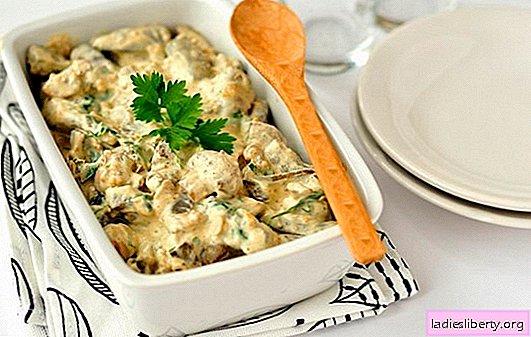
After an intramuscular injection, a person may develop various kinds of complications. This is usually associated with a violation of the performance of this manipulation. Consider in more detail why the injection site may hurt and how to get rid of this unpleasant symptom.
Sore after injection: the main causes of complications
Most often, the vaccination site hurts for the following reasons:
1. The development of infiltrate. This is one of the most common complications after injections. It arises for the following reasons:
• performing an injection with a blunt needle;
• use of a too short needle for injection into the patient’s muscle, which is intended for manipulations under the skin;
• wrong place for an injection;
• injections in the same part of the body;
• non-compliance with the basics of sterility.
2. An abscess is an acute inflammation of the soft tissues, in which pus begins to collect in them. The cause of this condition can be all of the above medical errors, especially a violation of asepsis rules, which led to infection.
3. Needle breakage during injection can occur when doctors use old needles. This can also be the case with a sharp movement of the gluteal muscles during the injection (when the patient is frightened) or if the injection itself was given to the patient with a standing body position.
4. The vaccination site can also hurt with the introduction of oil solutions and drugs intramuscularly (subcutaneously). At the same time, the patient’s condition worsens even more when the drug enters the vessel and clogs it. Thus, in that area of soft tissues, nutrition is disrupted, which will lead to tissue necrosis (death).
The main manifestations of the development of tissue necrosis are:
• blue skin;
• swelling at the injection site;
• severe pain;
• temperature rise.
In addition, even more dangerous is the fact that the oil medicine enters the vein, because in this case it will enter the pulmonary vessels by blood circulation. This in turn will cause pulmonary embolism, the symptoms of which are:
• choking;
• loss of consciousness;
• cough;
• a feeling of pressure in the chest.
5. Damage to blood vessels or nerves can occur with intravenous injections, the location of which was incorrectly chosen. Also, this complication can develop as a result of a chemical reaction when the medicine is near the nerve or clogs the vessel that feeds it. The consequence of this can be neuritis and severe pain. Sometimes loss of sensation of the leg develops.
6. Thrombophlebitis is a severe inflammation of a vein that has developed due to the formation of a blood clot in it. This condition can occur with frequent injections into the same vein, as well as with the use of blunt needles.
Symptoms of thrombophlebitis are:
• acute throbbing pain;
• increase in body temperature;
• impaired mobility of the limb.
7. Severe tissue necrosis can occur due to unsuccessful puncture of a vein or the introduction of a large amount of caustic chemical under the skin. This can happen if you do not enter the vein directly or when it is pierced through (it happens when an inexperienced nurse makes an injection).
Usually this serious condition occurs with the introduction of a calcium solution. In this case, it is important to apply a tight tourniquet as soon as possible, and introduce sodium chloride into the failed injection zone. He will slightly lower the strong dose of the drug administered.
8. A hematoma can occur with an inept injection, when the needle pierced the cavity of the vein and entered the soft tissues. In this case, a dark red spot will appear on the patient’s skin, which will be very painful.
9. Allergic reactions can develop in a person to any drug. In this case, the symptoms of this condition can be very different (itching, hives, swelling of the larynx, suffocation, fever, pain at the injection site, etc.). The most severe consequence of an allergic reaction is anaphylactic shock.
The place after the injection hurts: what to do
The most effective methods of treating pain and other complications after injections are the following methods:
1. Application of iodine mesh. To do this, a cotton swab needs to be wet in iodine and draw a grid at the injection site. Repeat the procedure three times a day. It will help get rid of edema and inflammation.
2. Means of cabbage:
• take fresh cabbage leaves;
• pierce them with a knife so that they start letting juice out;
• apply these leaves to a sore spot and wrap with a gauze bandage.
3. Honey product:
• mix a spoonful of butter with one chicken yolk, a spoonful of honey;
• roll cakes from the resulting mixture and heat them a little;
• apply the remedy to the sore spot after the injection and fix it with a plastic bag and gauze;
• leave it for a few hours;
• repeat the procedure every day for a week.
4. If a bruise forms on the buttock or arm, then it can be lubricated with honey.
5. If a cone occurs at the injection site, then you can do a compress with Dimexide. To do this, mix 1 part of the drug with four parts of alcohol. After the compress, the skin can be greased with olive oil.
6. Heparin ointment is considered very effective. She can lubricate a sore spot twice a day.
7. Vishnevsky ointment is also considered high-speed. It must be applied to the injection site and secured with a sterile gauze dressing. It will help relieve swelling, pain and inflammation more quickly.
In more severe cases, the patient may be prescribed such drugs:
1. Ointments against edema (Traksirutin, Mentovozin). Apply them with rubbing movements.
2. Healing ointments (Traumeel).
3. Analgesic drugs (Nurofen, Analgin).
4. With the development of an allergic reaction, the patient needs to take an antihistamine.
5. With the development of purulent lesions, strong antibiotics are prescribed to the patient.
The injection site hurts: how to be
Usually, the reaction after the injection does not appear immediately, but already when the person has come home. There is no reason to worry if, after an injection, the following symptoms are observed:
• the injection zone hurts, but it is not hot;
• there is no swelling;
• there is no aching pain, but only a slight redness;
• injection sites only hurt when palpating;
• The general condition of a person is normal and there are no unpleasant symptoms.
A doctor should be consulted if such symptoms occur:
• the appearance of swelling or edema at the injection site;
• increase in body temperature;
• severe pain at the injection site;
• discharge of pus;
• violation of limb sensitivity;
• darkening of the skin in the injection zone;
• the appearance of unpleasant symptoms in the form of headaches, etc.
It hurts after an injection: how to prevent complications
To prevent the development of complications after injections, you should adhere to these rules:
1. For injections it is very important to choose high-quality syringes and needles. It is best to use those syringes that have a small gum on the piston. Thanks to her, they can move smoothly and less injure soft tissues.
2. With the introduction of intramuscular injection, only those syringes that have a volume of up to five milliliters can be used.
3. It is very important to use a correctly selected needle. For example, using a short needle, the medicine will not enter the muscle, but will penetrate the subcutaneous fat layer. This will lead to inflammation and pain.
4. With the introduction of injections with an oil base immediately before injection, they must be brought to body temperature, because otherwise a cold solution can easily provoke the development of a cone.
5. Only a specialist should administer an injection, otherwise the patient may put himself at risk.
6. When injecting, you should relax the muscle so that the medicine can normally get into.
7. When injecting into the buttock, the needle must be driven deep enough, and not under the skin.
8. Before injection, you always need to massage the injection site a little and treat it with alcohol to get rid of germs.
9. After the manipulation, it is necessary to stretch the sore spot and treat it with a swab soaked in alcohol.
10. With frequent injections, they need to be done in different places on the buttocks. It is also advisable to alternate them.
11. You need to move more so that the cones resolve faster.
12. Drugs should not be administered subcutaneously, but muscle.
13. Syringes with a capacity of two cubes can only be used for injections to children.











